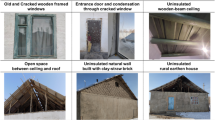Abstract
Technological progress has become a key aspect of our well-being and impacts both our daily life and everyone’s use of architectural space. The recent decade has witnessed a rapid evolution of technology which paved the way for smart interior design solutions and stimulated the environment for designers. Studying the effect of integrating smart solutions into aspects of flexible and sustainable interior design. In general, one of the most important ways to achieve Sustainability is to develop the space flexibility by the integration of home automation technology into future living spaces to ensure more efficient use of space (adaptable buildings are likely to use the same amount of space and materials more efficiently, on average, over their entire life). Smart homes have different goals and end-users. A smart home has to be a house and a home to stay, but as the way of living changes within the house, certain changes in space are needed to satisfy the new lifestyle of the occupants. This study explores how flexible space can improve the sustainability of interior design by using Smart Technology and understand the level of acceptance of smart home technology and the design preferences by the people of Sulaymaniyah. A questionnaire survey was established based on the literature review of principles of flexibility, sustainability, and smart technology in interior design, collected raw data and perform statistical analysis to understand whether or not Smart home technology is suitable for the region and what would be the design preferences of people to make it more welcomed in the housing sector as a solution to attain more flexible and sustainable buildings. Results explained that there is a market for Smart Homes in the region of Sulaymaniyah with some modifications in the concepts of smart homes design. The younger group of samples is more accepting of the concept while the older group is also accepting, however, is not entirely comfortable with the complete integration of public and private zones of the future Smart homes.


Similar content being viewed by others
References
Williamson GA (2016) Vern Yip's design wise: your smart guide to a beautiful home.
Robles RJ, Kim TH (2010) Applications, systems and methods in smart home technology. Int J Adv Sci Technol 15:37–48
Stefanov DH, Bien Z, Bang WC (2004) The smart house for older persons and persons with physical disabilities: structure, technology arrangements, and perspectives. IEEE Trans Neural SystRehabilEng 12(2):228–250
Graham P (2005) Design for adaptability—an introduction to the principles and basic strategies. Environment Design Guide, pp 1–9
Croxton KL, Gendron B, Magnanti TL (2003) A comparison of mixed-integer programming models for nonconvex piecewise linear cost minimization problems. Manage Sci 49(9):1268–1273
Ching FD, Binggeli C (2018) Interior design illustrated. Wiley, Hoboken
Russell P, Moffatt S (2001) Assessing buildings for adaptability: energy-related environmental impact of buildings. IEA Annex 31(2)
Fawcett W (2016) Activity–space research (built space I the digital world), published through great space independent publishing platform, UK, p 46
Newman P, Kenworthy J (1999) Sustainability and cities: overcoming automobile dependence. Island press, Washington, DC
Rashdan W, Ashour AF (2017) Criteria for sustainable interior design solutions. WIT Trans Ecol Environ 223:311–322
Saad al-sumaiti A, Ahmed MH, Salama MM (2014) Smart home activities: a literature review. Electr Power Compon Sys 42(3–4):294–305
Jozam MH (2016) Smart home design: spatial preference modeling of smart homes.
Al Khafaji IAM, Kamaran R (2019) The influence of spatial flexibility to improve sustainability of interior design by using smart technology (case study-future smart home in Iraq). Eur J Sustain Dev 8(4):438–438
Addington DM, Schodek DL (2005) Smart materials and new technologies: for the architecture and design professions. Routledge, Abingdon
Allouch SB, van Dijk JA, Peters O (2009) The acceptance of domestic ambient intelligence appliances by prospective users. In: International conference on pervasive computing. Springer, Berlin, Heidelberg, pp 77–94
Elattar SMS (2013) Smart structures and material technologies in architecture applications. Sci Res Essays 8(31):1512–1521
Abdulpader OQ, Sabah OA, Abdullah HS (2014) Impact of flexibility principle on the efficiency of interior design. Int Trans J Eng Manage Appl Sci Technol 5(3):195–212
Kolarevic B, Parlac V (eds) (2015) Building dynamics: exploring architecture of change. Routledge, Abingdon
Nakib F (2010) Technological adaptability, an approach toward a flexible and sustainable architecture [w:]. In: Conference on technology & sustainability in the built environment, pp 479–493
Aarts E, Wichert R (2009) Ambient intelligence. Technology guide. Springer, Berlin, pp 244–249
Hazewinkel M (2001) The algebra of quasi-symmetric functions is free over the integers. Adv Math 164(2):283–300
Dean S, Illowsky B (2018) Descriptive statistics: skewness and the mean, median, and mode. Connexions website.
Everitt BS (1998) Thecambridge dictionary of statistics cambridge University Press. UK Google Scholar, Cambridge
Allameh E, Jozam MH, de Vries B, Timmermans H, Beetz J (2011) Smart home as a smart real estate: a state of the art review. In: 18th annual European real estate society conference, Eindhoven, The Netherlands.
Bali M, Half DA, Polle D, Spitz J (2019) Smart building design: conception, planning, realization, and operation, Birkhäuser.
Cranshaw J, Yano T (2010) Seeing a home away from the home: Distilling proto-neighborhoods from incidental data with latent topic modeling. In: CSSWC workshop at NIPS, vol 10
Luor TT, Lu HP, Yu H, Lu Y (2015) Exploring the critical quality attributes and models of smart homes. Maturitas 82(4):377–386
Rialle V, Ollivet C, Guigui C, Hervé C (2009) What do family caregivers of Alzheimer's disease patients desire in smart home technologies. arXiv preprint. arXiv:0904.0437.
Author information
Authors and Affiliations
Corresponding author
Additional information
Publisher's Note
Springer Nature remains neutral with regard to jurisdictional claims in published maps and institutional affiliations.
Rights and permissions
About this article
Cite this article
Radha, R.K. Smart home design flexibility as an enabler of sustainability and the reception in Sulaiymaniah, Kurdistan Region-Iraq. J Build Rehabil 5, 29 (2020). https://doi.org/10.1007/s41024-020-00094-y
Received:
Accepted:
Published:
DOI: https://doi.org/10.1007/s41024-020-00094-y




